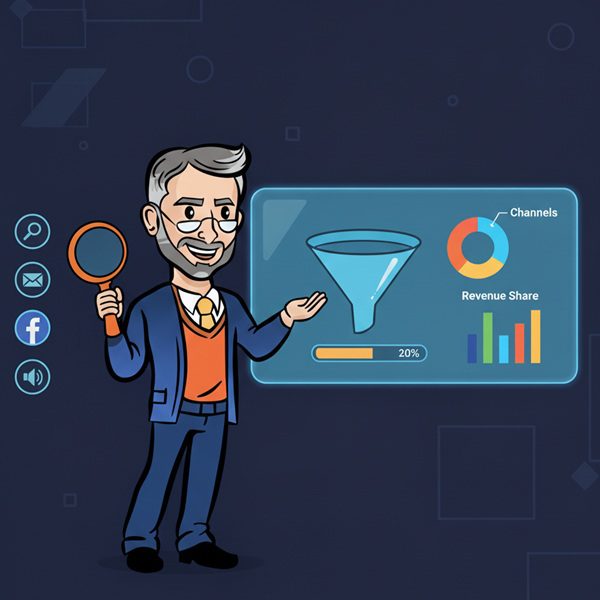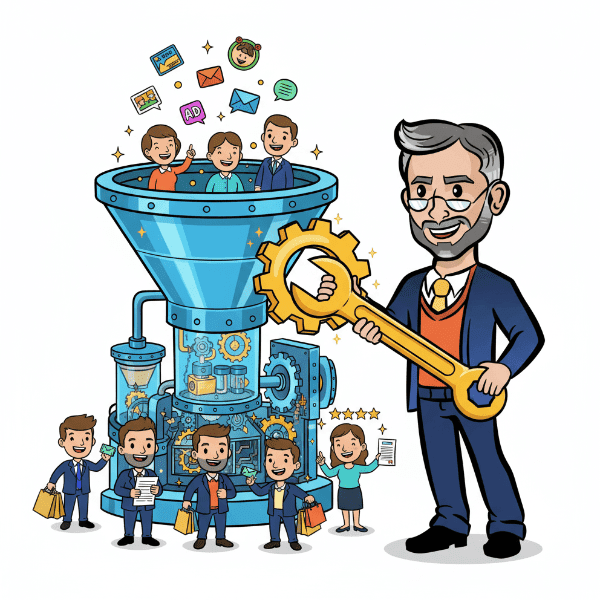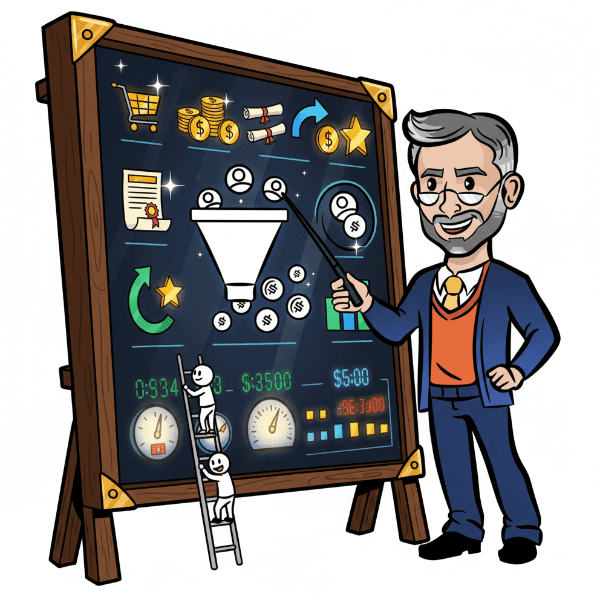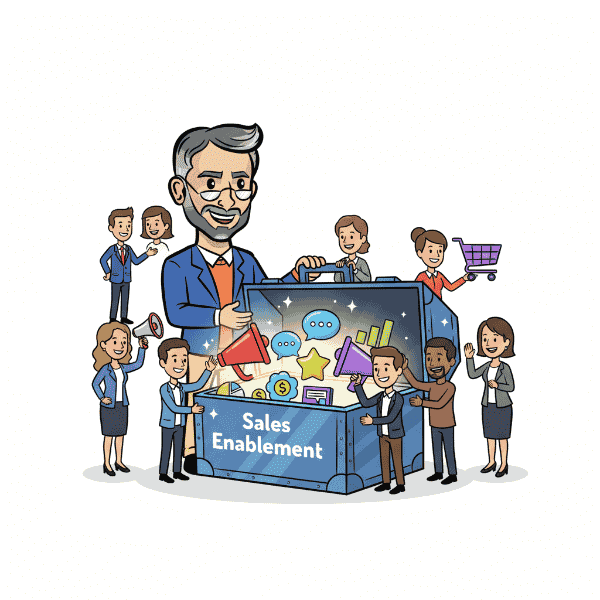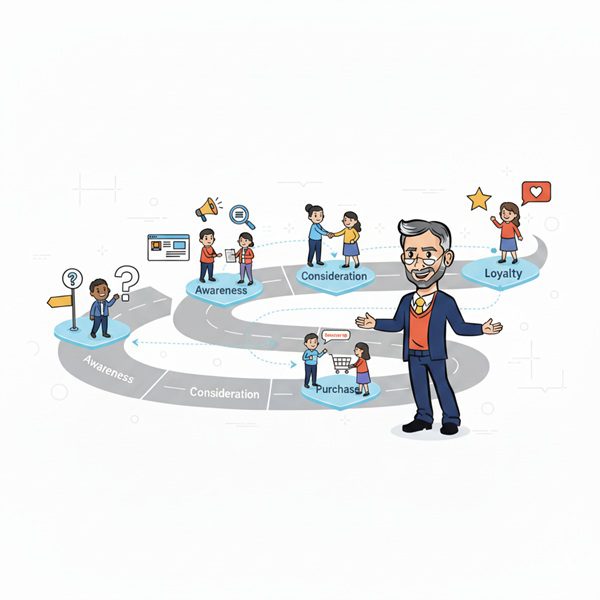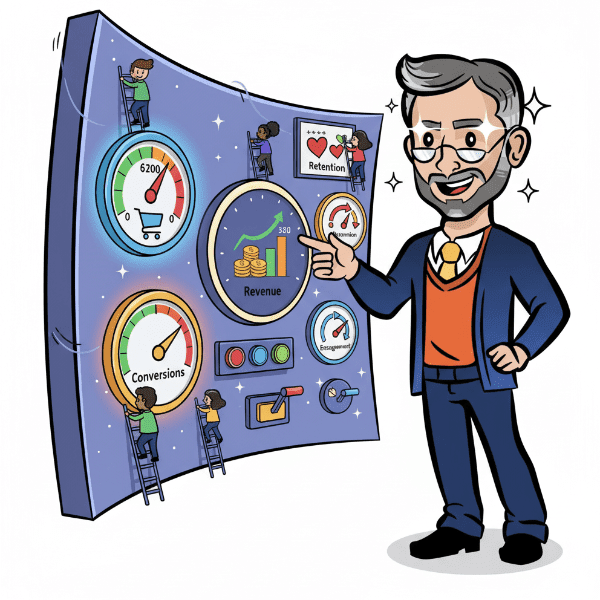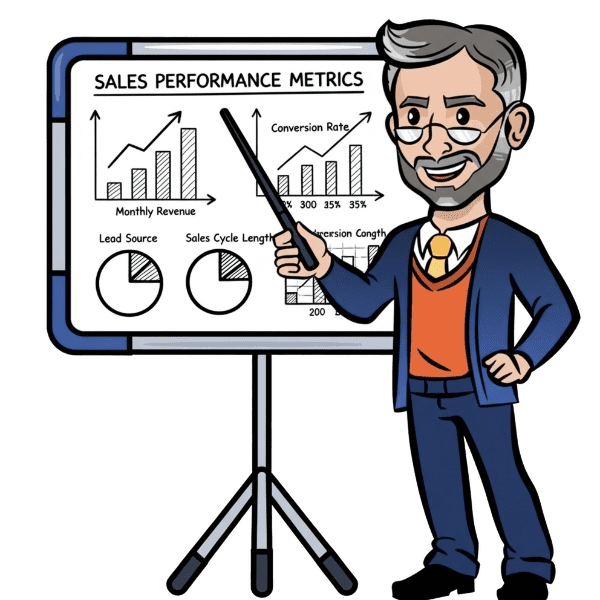Why Sales Cycle Optimization Matters
Definition: A well-structured sales cycle is critical for moving prospects from initial awareness to a closed deal with efficiency and consistency. For startups and growth-focused businesses, understanding and optimizing each stage of the cycle builds a predictable pipeline, shortens deal timelines, and maximizes revenue potential.
By focusing on a defined sales cycle, companies can better align their sales and marketing strategies, improve lead qualification, and enhance forecasting accuracy. It’s not just about chasing deals; it’s about building a repeatable, scalable system to turn opportunities into customers.

Use It In A Sentence: Our team worked to shorten the cycle by automating follow-ups and improving our lead qualification process.
Benefits of Effective Sales Cycle Management
- Faster Deal Closures: A clear, structured sales cycle helps reps know exactly which actions to take at each stage, reducing wasted time and speeding up conversions.
- Improved Lead Qualification: By mapping your sales process to the sales cycle, you ensure that only the most promising leads progress through your funnel.
- Stronger Revenue Forecasting: With well-defined stages, sales leaders can predict future revenue with more confidence and plan resources accordingly.
- Enhanced Customer Experience: A seamless, thoughtful sales cycle builds trust and credibility with prospects, giving them a smoother path to purchase.
- Better Team Alignment: A consistent sales cycle creates transparency across marketing, sales, and customer success teams, making handoffs cleaner and follow-ups more effective.
Key Elements of Sales Cycle Optimization
- Prospect Identification: Clearly define your ideal customer profile and focus outreach efforts on the best-fit prospects to keep your sales cycle efficient from the outset.
- Lead Qualification: Use a standardized framework (like BANT or MEDDIC) to evaluate whether a lead is worth pursuing, ensuring time and resources are invested wisely.
- Engagement & Discovery: Build rapport, uncover pain points, and educate the prospect about your solution. These early conversations shape the rest of the sales cycle.
- Solution Presentation: Tailor demos, proposals, and presentations to address the specific needs uncovered during discovery, reinforcing value and differentiation.
- Objection Handling & Negotiation: Anticipate common concerns and have clear responses ready to maintain momentum and avoid stalls in the sales cycle.
- Closing: Set clear next steps, finalize agreements, and remove any final roadblocks to sign the deal.
- Post-Sale Follow-Up: A sales cycle shouldn’t end with a contract signature. Onboarding, check-ins, and customer success efforts are key to driving retention and referrals.
More Definitions
(From the Sales & Marketing Jargon Encyclopedia)
- Sales Qualified Lead (SQL): A lead deemed ready for direct sales engagement after initial qualification.
Read More> - Multichannel Optimization: The process of refining and coordinating marketing efforts across multiple platforms—like email, social media, and search—to deliver a seamless and effective customer experience.
Read More> - Customer Conversion Rate: The percentage of visitors or leads who take a desired action—like making a purchase or signing up—out of the total number of prospects.
Read More> - Marketing Analytics Tools: Software platforms that help track, measure, and analyze marketing performance data to improve decision-making and campaign effectiveness.
Read More> - Shopping Cart Abandonment: What is shopping cart abandonment? Learn what causes it, how to reduce it, and how to recover lost sales in your e-commerce funnel.
Read More>
Useful Posts
(From the Sales Funnel Professor Blog)
- Growth Consulting Guide for Sales & Marketing Leaders: Explore proven frameworks to drive sustainable growth and align your teams for success.
Read More >
- HubSpot Training ROI: Boost Sales & Marketing Results: Learn how to maximize your investment in HubSpot training for measurable improvements in sales and marketing outcomes.
Read More >
- Ideal Customer Profile (ICP): How to Define & Use It for Growth: Discover practical steps to build and apply your ICP, ensuring your outreach targets the right audience for scalable growth.
Read More >


